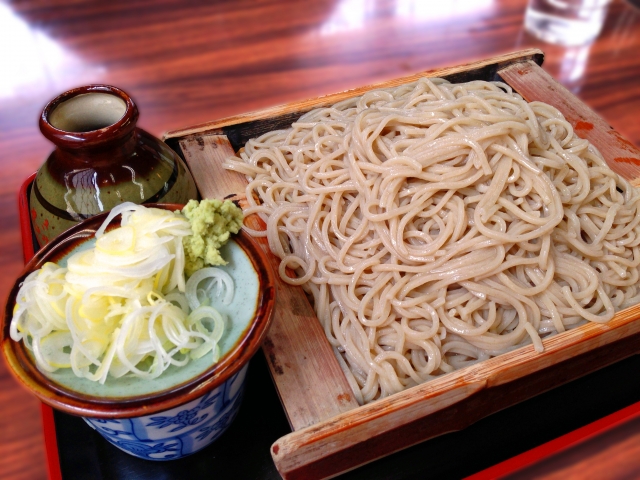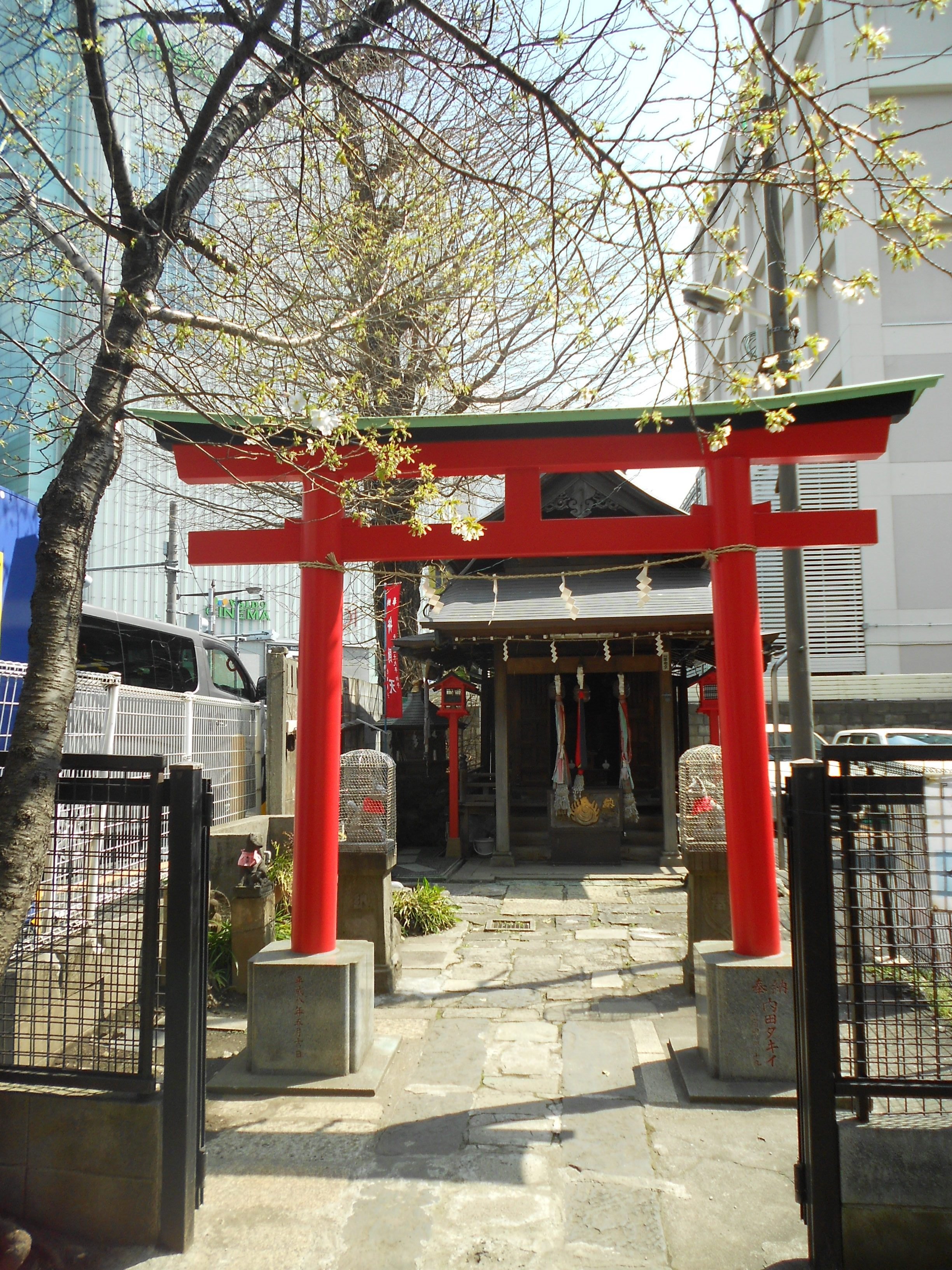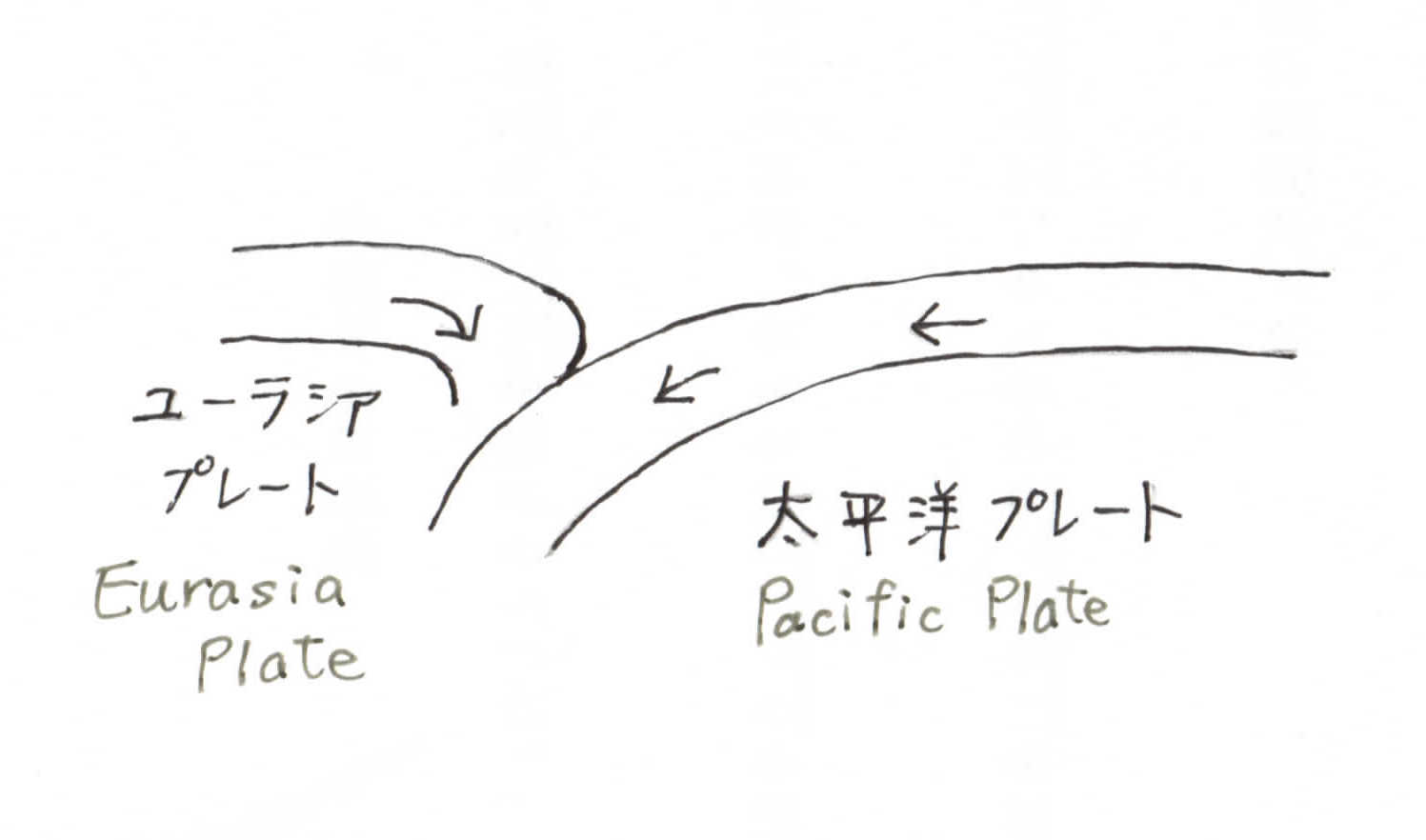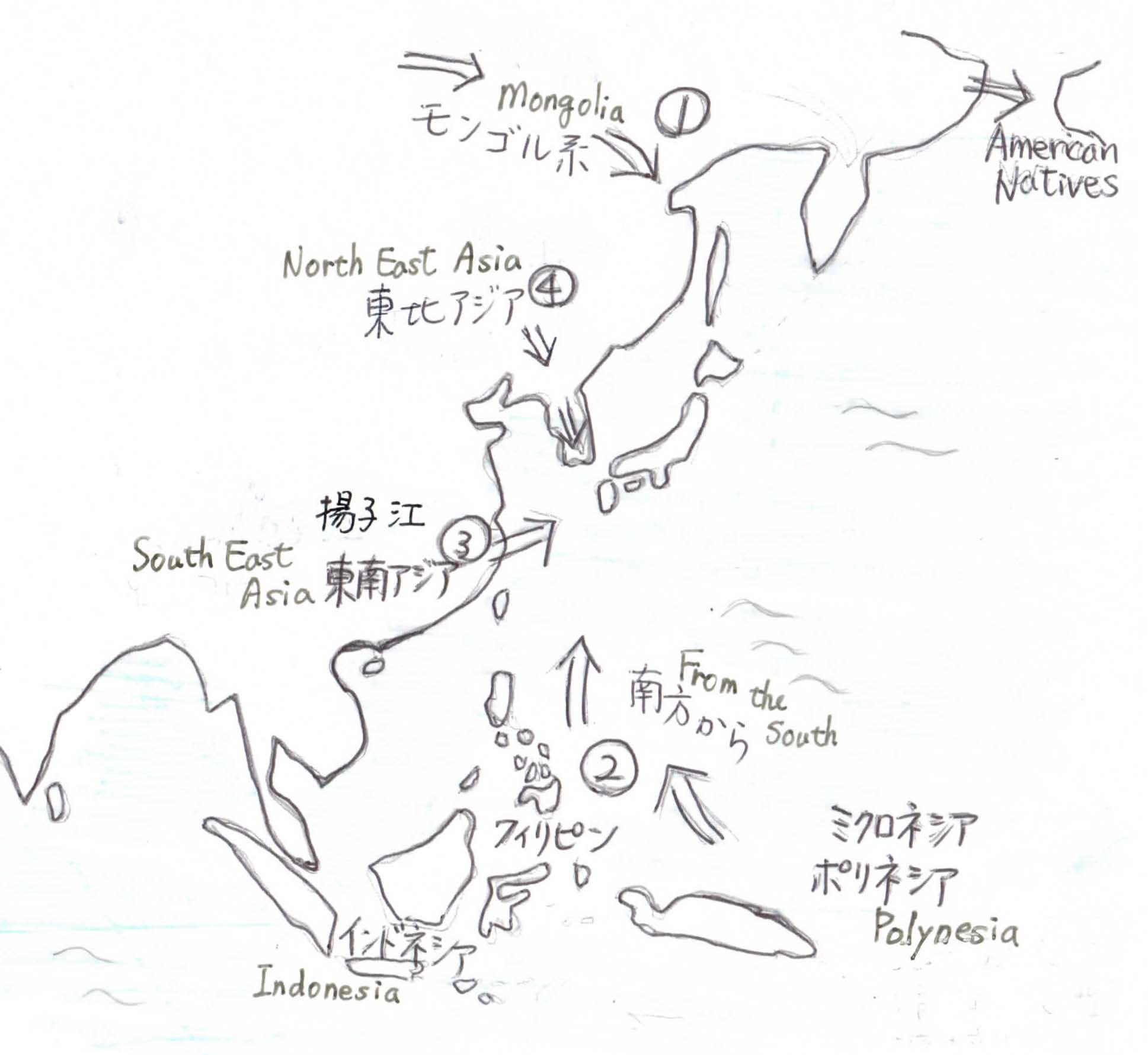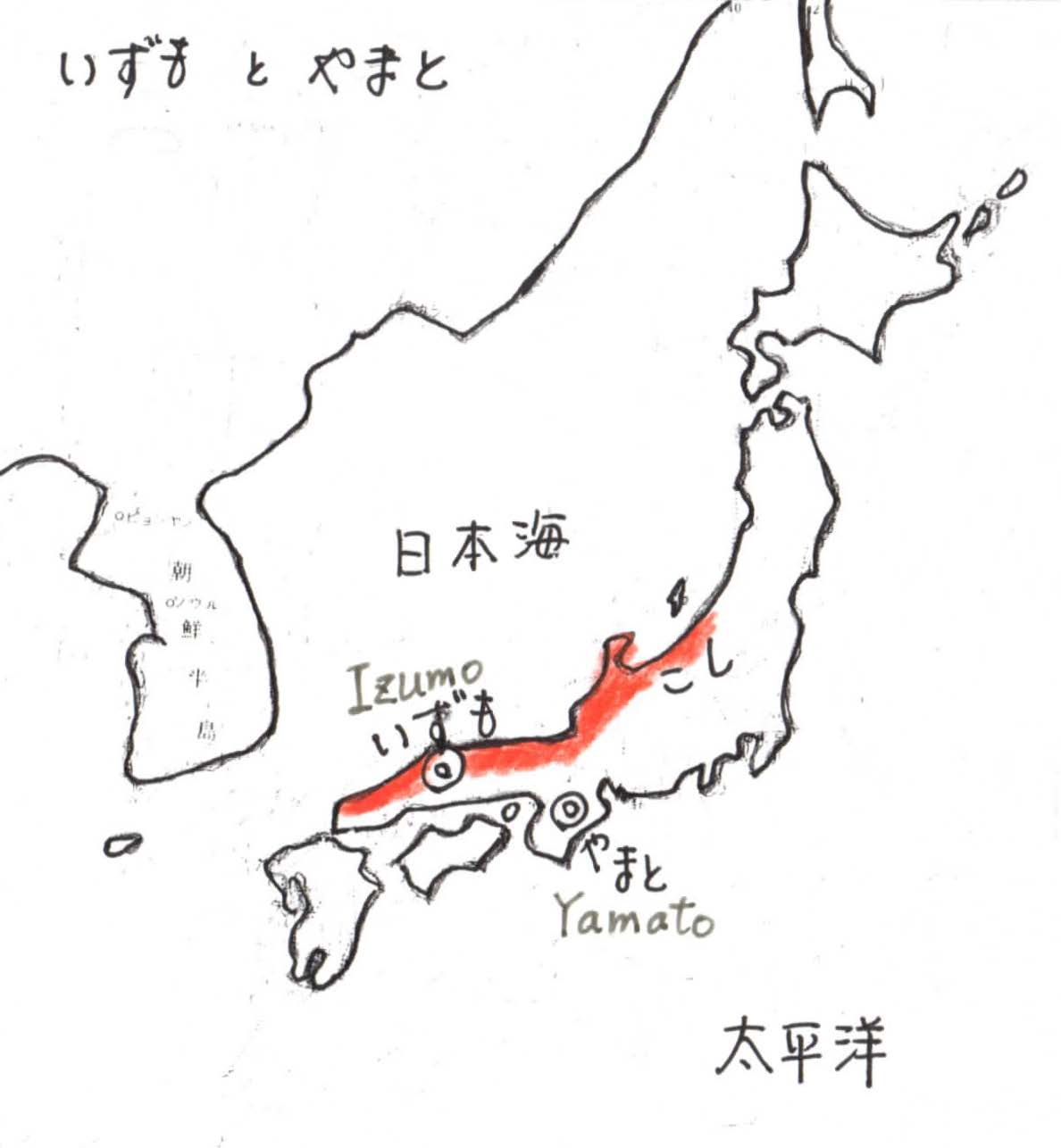☆1 ” The Origin of the Sun “
In Japanese, we pronounce Japan as “Nihon” or “Nippon”. The reason why either sound is OK is we imagine the kanji in mind as soon as we hear the sound and understand it with the kanji “日本”. (*1 )
The Chinese way reading of 日本 is “Nihon (Nippon)” but the Original Japanese reading of 日本 is “Hinomoto”, meaning “the origin of the sun”. It is said that this naming was made in the 7th century. (*2 )
☆2 ” Yamato “
For thousands of years, people came across to the Japanese Archipelago from North Asia (Mongolia, Okhotsk), Polynesia, Indonesia, Southeast Asia, South China, Korean Peninsula, etc. People gradually got mixed and made “Original Japanese people”. (*3 )
There were many battles between the people who came earlier and those who came later. And after repeated tribal conflicts, various “Kuni (tribal countries)” were gradually made in various places. Such as “Izumo” (Shimane, Sea of Japan coast), “Koshi” (Niigata, Sea of Japan coast), “Tsukushi” (Northern Kyushu), “Kibi” (Okayama), “Yamato” (Nara), “Kinu” (Gumma, Tochigi), etc.
On the Korean Peninsula, Kara (加羅)、Baekje (百済)、Shilla(新羅)and Koguryo (高句麗) were repeatedly fighting from the 4th century to the 7th century. Every time a battle occurred, a large number of people and goods of the side that lost flowed into the Japanese islands. The exiles became the driving force of development in Japan.
Among many Kuni (small countries), “Yamato” accepted many migrants from the advanced cultures of Kara and Baekje from the 4th century. The influence gradually became larger, and Yamato became the most powerful country in Japan. At the beginning of the 6th century “Tsukushi” in Northern Kyushu was finally defeated by “Yamato”. And there was no more Kuni against “Yamato”.
☆3 Prince Shoutoku (7th century)
In China, “Sui (隋)” united China in the end of the 6th century (589), and after “Sui”, “Tang (唐)” (618~907) became very powerful.
“Yamato” watching the international circumstances in the East Asia, also wanted to make a united country of the whole of Japan. For that purpose, they thought they should not fight inside Japan among Baekje, Shilla, Koguryo groups, but should turn their attention to China, a bigger culture, and should send delegates directly to China, and adopt new ideas and systems so that they could make a new united country.
So, though there had been no exchange with China for over 100 years, Prince Shoutoku of “Yamato” sent a delegate directly to “Sui” without passing through the Korean Peninsula in 607. He wanted to show that “Yamato” was a representative of the whole of Japan ruling over other small countries, and at the same time he meant that Japan was an independent country equal to “Sui”. He wrote in the letter, “From Tenshi (Emperor) who is at sunrise ( a place of rising sun) to Tenshi who is at sunset.”
At that time China, looking down neighboring countries, called Japan “Wa (倭)” which means “to decline”. But, as knowledge of kanji gradually increased, Prince Shotoku realized being insulted and he tried to express his pride of his emerging country with the new name, “the country of Sunrise”, as Japan being located at the east of China.
☆4 Self-made National name
Emperor of Sui who saw “country of sunrise” or “日本”, must have got angry. But, since Sui was fighting with Koguryo at that time, Sui would be in trouble if Japan went around to the Koguryo side. Though there were various backgrounds, Japan was able to have such a bold name because Japan was an island country protected by sea.
In the era of the Tang Dynasty in the middle of the 7th century, it was seen in the Chinese history book that the name of the united country was made as “日本” based on this “place of rising sun”. (*1 ) New self-made national name, this is the beginning of “Nippon (日本)”.
In the Korean Peninsula, as soon as they talk big, they would be attacked, so that they needed a delicate political sense of decision-making.
Korea and Japan have similar culture and many other similarities. But the island country, Japan, felt almost no threat from other peoples. On the other hand, Korean Peninsula can be said to be the history of invasions by foreigners. This is a very different geographical condition of the two countries.
In the Korean Peninsula, the chances of winning or losing is one in two. But Japan was located at the dead end of the Asian area. There was no place to escape farther, so everyone had to manage to get along well together. They had no choice but to respect “harmony”.
☆5 Why does “大和” read as “Yamato”?
The kanji “倭(Wa)” was the old name of the country named by China. It did not have a good meaning, so the kanji “倭” was changed to a good kanji “和 (harmony)” which has the same sound in Japanese, and “great (大)”was added to “和”, and read “Yamato”.
Still now, “Wa (和)” is used for making kanji idioms such as Japanese clothes (和服), Japanese cuisine (和食), Japanese sweets (和菓子), Japanese style rooms (和室), etc.
In a word
In the 7th century when “Yamato” sent a delegation with a letter to China, a new self-made name “Nippon” was written in the letter by the fact that Japan is located in the east of China.
―――(*)―――
*1 One “kanji” ( 漢字、Chinese character) has sometimes two or three different ways of reading in Japanese, depending on the age or the place when it was adopted.
*2 In the Chinese history book “Old Tang Book (旧唐書), Nihon Den (日本伝)”, it’s written that “Nippon (日本)” is another name of “Wa” and has the name as the country was located in the east where the sun rises. (648 )
*3 Refer to “ 8. Where did the Japanese people come from?”



